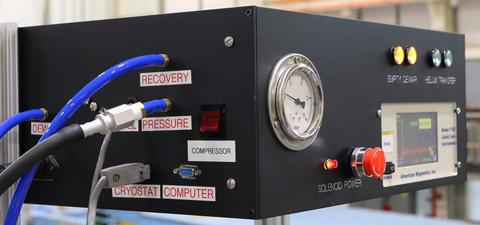CHRNS: Cryogenic Systems
Incorporation of a binary gas analyzer into a dilution refrigerator
The operational of a low temperature (~30 mK) dilution refrigerator (DF) is controlled by the relative mixture of He3-He4 in a closed system. We previously had no knowledge about the composition of the gas in the DFs used on CHRNS instruments that are often used to probe the quantum behavior of materials and require temperatures to be maintained over the experiment. If there was a temperature failure we could not diagnose and solve gas mixture problems while the experiment was on going and it would waste valuable beamtime.
During the unexpected outage, a binary gas analyzer capable of distinguishing He3 and He4 has been integrated into one of the DF gas handling systems. This diagnostic and troubleshooting tool allows in situ 3He-4He mixture analysis enabling a quick and simple diagnosis of any DF issues related to 3He-4He mixture. It also provides a means to further optimize the DF cooling power and base temperature on the fly without risking the neutron experiment.
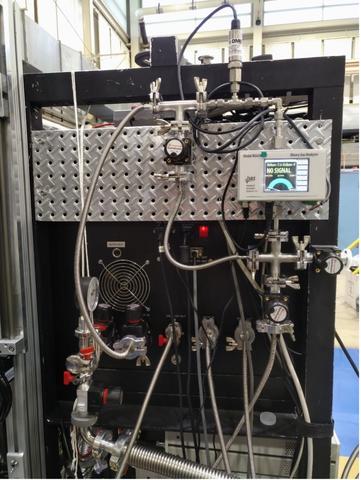
Carbon fiber sample sticks for helium-flow cryostats and top-loading refrigerators
Using the top-loading closed cycle refrigerators (TLCCR) and helium-flow cryostats has involved rather long times to cooling to base temperature after a sample change. For example, for a tall TLCCR it can take several hours for the system to re-cool.
During the unscheduled outage, we have evaluated low thermal conductivity and low heat capacity carbon fiber sample sticks as a replacement for the current stainless-steel ones for both helium flow and TLCCR systems.
The carbon fiber sample sticks showed excellent performance reducing the sample change times by 20 to 30 minutes depending on the experiment and type of equipment which allows experiments to re-start sooner, enhancing neutron utilization. These sample sticks are now in use on the CHRNS HFBS TLCCR, CHRNS MACS 100mm ILL Orange cryostat as well as other 70mm short ILL Orange cryostats.
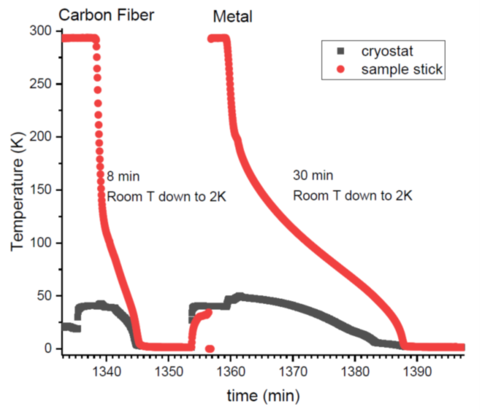
Orange cryostat upgrades
The original helium flow ‘orange’ cryostats have a single 1.5 K heat exchanger. This results in cryostat preparation and sample change times on the order of hours.
During the unexpected outage, a cryostat (#13) has been equipped with three heat exchangers resulting in more cooling power, faster preparation and sample changing times (see Figure 1). It now takes under half the time to prepare a cryostat. Based on this successful test, we will continue to retrofit the suite of helium cryostats and anticipate two more will be complete in 2023.
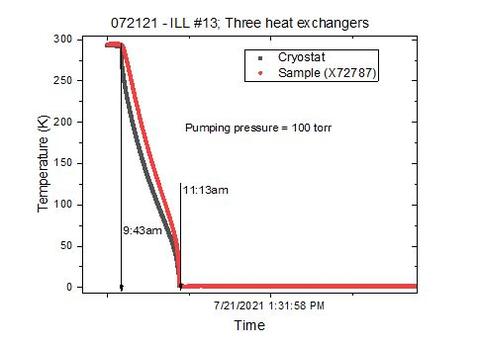
Automatic Needle Valve Control System for wet cryostats and magnets
- The System automatically adjusts cooling power of wet cryostats and magnets by closing/opening of the Needle Valve
- This adjustment works automatically based on the desired Helium pumping pressure. This pressure, in turn, is automatically calculated based on the temperature range the cryostat is at and based on the direction of the temperature change
- The System can be operated both manually and automatically
- The System consists of: standard commercial items: a step motor and its controller, pressure gauge, cables in-house designed items: Aluminum motor holder, enclosure for the controller and interfaces, LabView based software
- The System will be used for: ILL Orange cryostats (14 pcs), 3He insert for 7T, SANS 9T, 10T, 11T and 15T magnets as well as future SE systems
- The System saves labor, liquid Helium and beam time
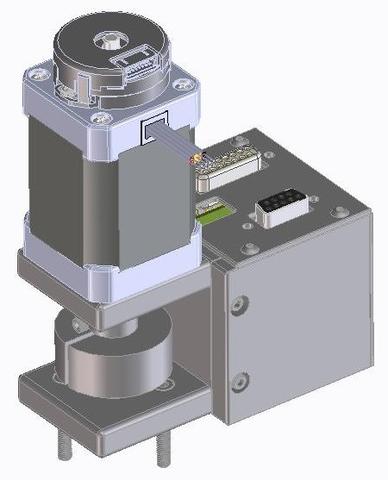
Automatic Cryogens refill System for wet cryostats and magnets
The Automatic Cryogen Refill System can automatically refill liquid nitrogen and liquid helium once the level has reached the lower limit and will automatically stop once reach the higher limit.
